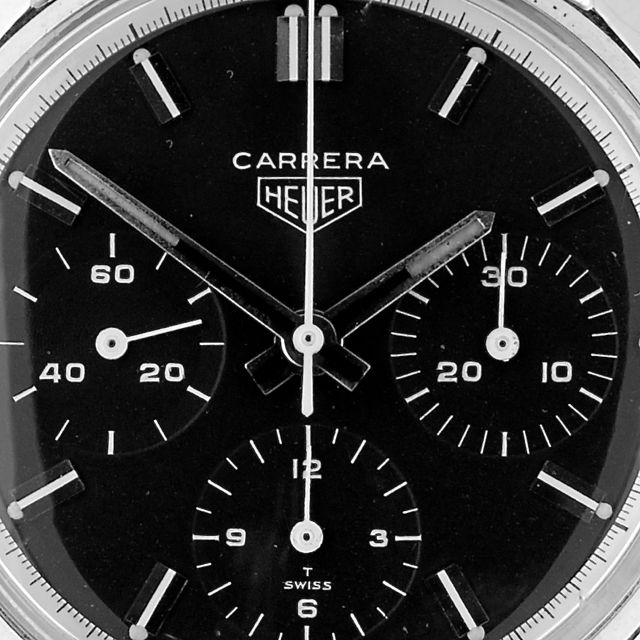
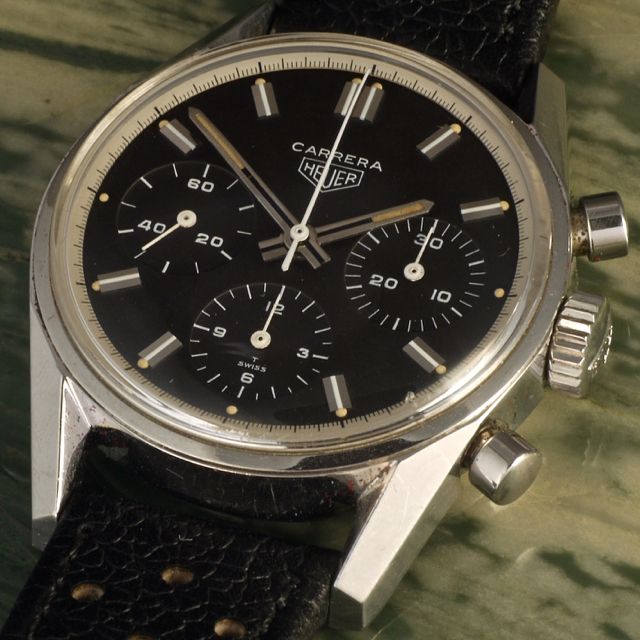
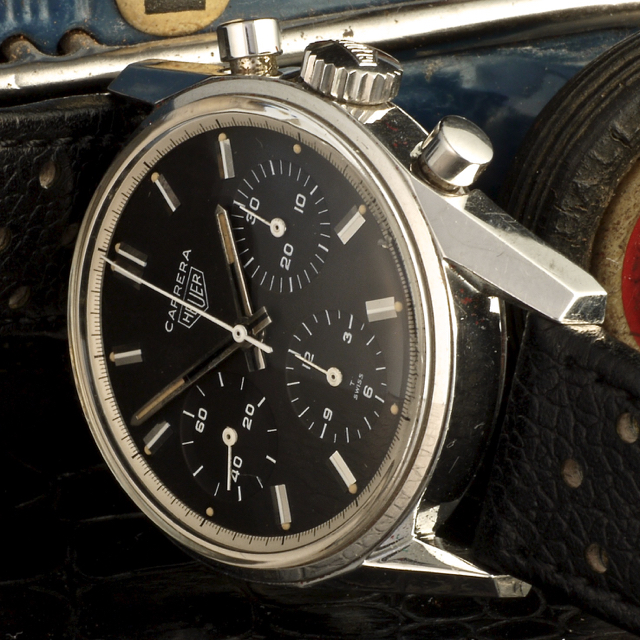
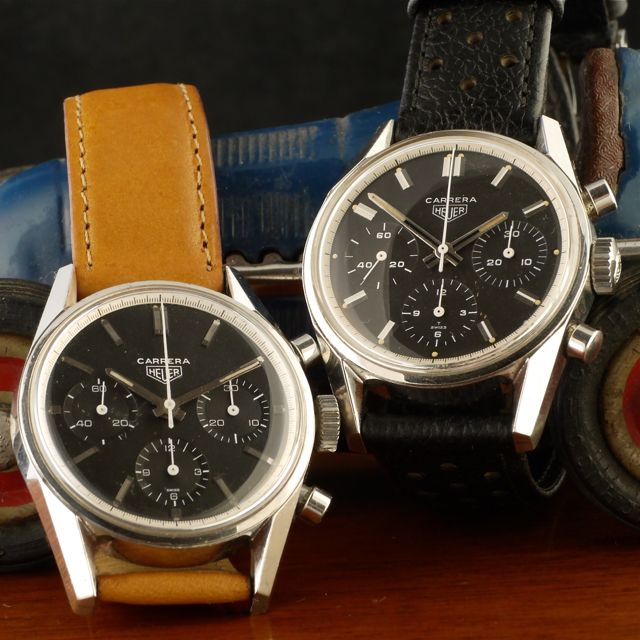
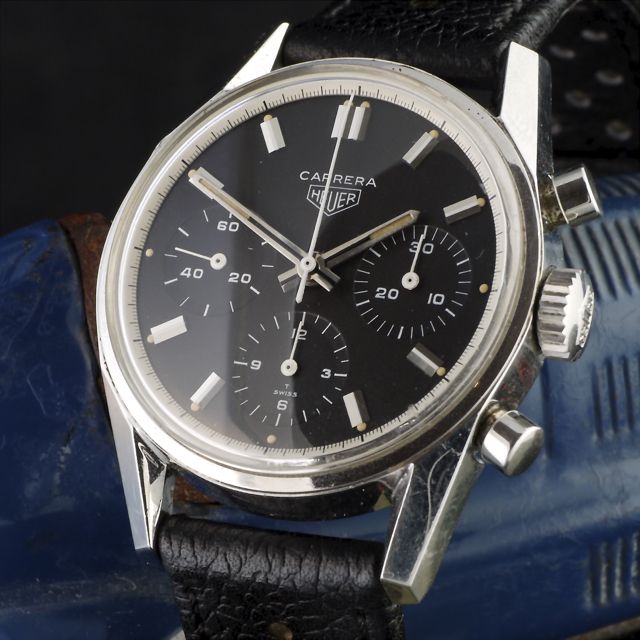
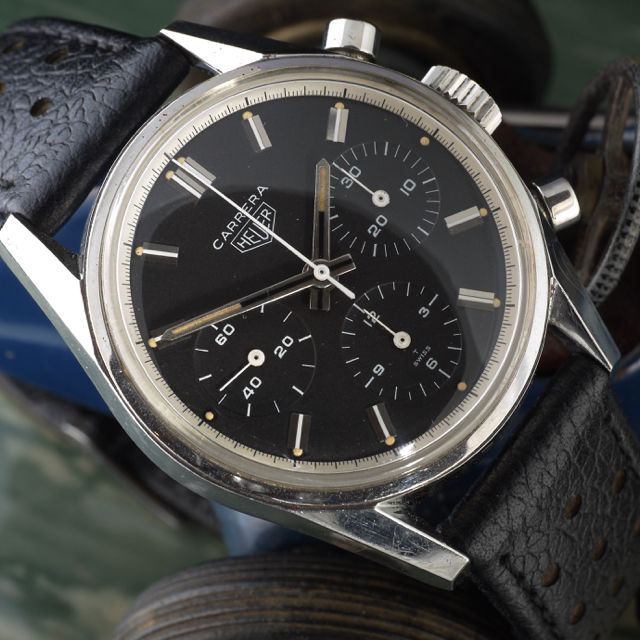
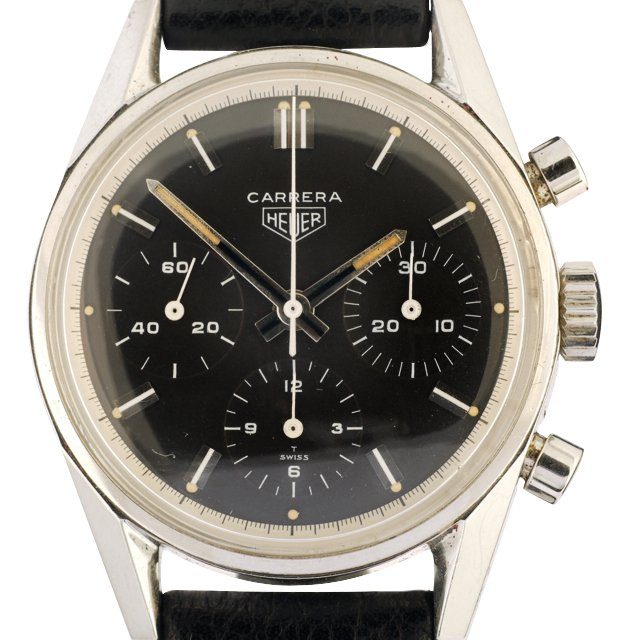
Heuer Carrera 12
The successful flight of Apollo 8 makes Commander Frank Borman, Command Module Pilot James Lovell, and Lunar Module Pilot William Anders the first people to orbit the moon1968 Heuer Carrera ref. 2447 N, 36mm. case, second execution dial, manual winding Valjoux 72 movement. In the 1960s and 1970s, no brand was more prominent in motorsports timing than Heuer.
A new world record, an identical watch was sold by Bonhams in 2015 for US$9.640, I believe this watch needs to worth more them any Hublot.
The Valjoux 72 is a three register column-wheel manual wind chronograph movement that traces its origins back to the 1930s. The V72 was used in the Daytona Paul Newman and many other high-end watches, but also in some lesser-known brands; expect to pay a premium price for watches with this rare and celebrated movement.
Alone, it is worth more them US$500, often used as spare parts for more expensive watches, and I go further, an unmarked Valjoux 72 can be signed and turned into a Rolex, Breitling, Heuer, Jaeger, and others, so be careful with identification.
The Carrera was one of Jack Heuer’s most passionate projects. Jack wanted a watch that was stylish and functional, a watch that gives you everything you need and nothing you don’t. The result is the indisputably gorgeous Carrera.
For a watch designed in the early 1960s, the Carrera remains a stunner 50 years later, and this speaks for the brilliance of Jacks’ design philosophy. A clean dial never goes out of style, and it makes the Carrera an easy watch to wear, whether you are dressing up or down. The 36mm. case wears surprisingly large due to the long beveled lugs.
It all started in 1860, with Edouard Heuer setting up a workshop in Bernese, a predominantly French-speaking area of Switzerland close to the French border, a small town even now with a population under 5000. However, it is no stranger to watch companies, having also been where Breitling was founded and having been home to Longines. Of course, those companies were artisan workshops producing small numbers of mostly silver-cased pocket watches.
In 1914 Heuer made the first wristwatch for men, they used pocket-watch movements and reflected demand for wristwatches that would only increase during the First World War and after.
1920 was the first time in 8 years that an Olympic Games had been held, following the cancellation of the 1916 Berlin events. Heuer had some prominence as a sports timing company by this point and was pleased to be selected as the official timer of the Antwerp games. This was subsequently extended to the 1924 games in Paris and 1928 in Amsterdam: this cemented the brand marriage between timing and sports.
For today’s collectors, the heyday for Heuer really began in the mid-1930s. I think that’s also probably true for many other brands. Heuer began making pilots chronographs in 35. These were used by Air Force pilots primarily, a lot of them in the German Air Force. For most Heuer collectors, these pilot chronographs from around 1935 are the first real survivors that regularly can be found in the market today.
In the 1960s and 1970s, no brand was more prominent in motorsports timing than Heuer.
